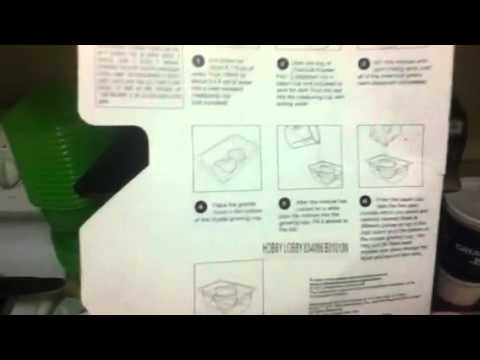My science lab crystal growing instructions
Dating > My science lab crystal growing instructions
Download links: → My science lab crystal growing instructions → My science lab crystal growing instructions
Going Further There are many factors that affect crystal growth, so crystal projects are great for scientific experimentation and science fairs. It is also often referred to as an amorphous solid, although there are distinct differences between crystalline solids and amorphous solids: most notably, the process of forming a glass does not release the latent intense warmth of fusion.

More sugar molecules gradually joined with the ones already on the stick, forming larger crystals. Some crystalline materials may exhibit special electrical properties such as the ferroelectric effect or the piezoelectric effect. You can use any of a number of common household chemicals to get the effect. Cooling the solution rapidly encourages fast crystal growth, since there is less room for the dissolved salt in the cooler, denser solution. Let it sit overnight.
Teach children about the beauty and complexity of crystal growth with the 4M Crystal Growing Experiment. Record the temperature of the air where the dish is located and what you see when you inspect the dish. Liquid crystals LCs are a state of matter that has properties between those of a conventional liquid and those of a solid crystal. This special snowflake is almost just as beautiful and unique as a snowflake you capture from the sky.

Growing Crystals - It gets its name from its most important component, known as a crystal detector, originally made with a piece of crystalline mineral such as galena. For example, diamond, graphite, and fullerenes are different allotropes of carbon.

What is the difference between a crystal and glass? Do the molecules in glass form a distinct pattern? What about the molecules in a crystal? Is there anything you can change to make crystals form faster? Does temperature affect how rapidly crystals form? Do crystals grow from the inside out or from the outside in? Man has long been fascinated by crystals. Recognizing their beauty, we may wear them as ornaments and purchase crystal-growing kits for our children. Some people even believe that certain types of crystals are associated with particular states of mind. However, some of the best crystals are grown without using store-bought kits. The molecules in crystals are different from the molecules in other substances because they are aligned in a recognizable, repetitive pattern. This is very different from glass because the molecules in solid glass have the same random pattern that they did when the glass was in a liquid state. This regular alignment occurs when crystals emerge from a supersaturated solution. A super-saturated solution is one that contains more molecules of a dissolved crystalline solid that than the liquid can hold. Since you can dissolve more of a substance in hot water than you can in cold water, a supersaturated state is achieved by dissolving a substance in hot water. As the solution cools, it will hold less of the dissolved substance. As it cools, crystals form. They will continue to grow for as long as there liquid is present. The characteristic shape of a particular type of crystal is called its habit. Examine the dish twice daily. Record the temperature of the air where the dish is located and what you see when you inspect the dish. Continue making observations twice daily until the liquid has evaporated usually less than one week. After each addition, stir until the chemical is dissolved. Keep adding the chemical until no more will dissolve. Cover the jar containing the solution. You will use this solution again in step 6. When you see a perfectly regular shape of a single crystal, remove the crystal with tweezers or a toothpick. Very carefully, tie one end of a nylon fishing line around the crystal. It helps if you make a loose slip knot that you can loop over the crystal and gently tighten it. By bathing the individual crystal, it can grow freely. Leave the lid off, but leave the dish in a place where dust will not fall into the jar. Document your observations, including the temperature of the air. By accessing the Science Fair Project Ideas, you waive and renounce any claims against Education. In addition, your access to Education. Warning is hereby given that not all Project Ideas are appropriate for all individuals or in all circumstances. Implementation of any Science Project Idea should be undertaken only in appropriate settings and with appropriate parental or other supervision. Reading and following the safety precautions of all materials used in a project is the sole responsibility of each individual. For further information, consult your state's handbook of Science Safety.
Last updated